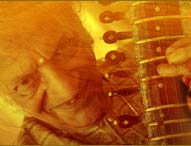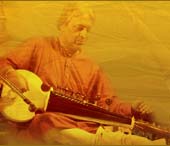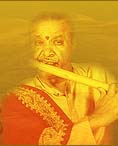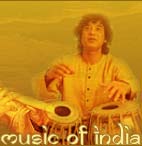Born On: April 11, 1904
Born In: Nawa Shahar, Jammu and Kashmir
Career: Singer and Actor
Nationality: Indian
Popularly known as shahenshah-e-mausiqi (emperor of music) and acclaimed as the ghazal king, K.L. Saigal has been idolized for his distinctive style which made him a phenomenon in his own lifetime. The legendary singer did not require any formal training to record the unforgettable 185 songs including the immortal "Diya Jalao Jagmag Jagmag", "Rumjhum Rumjhum Chalti Hai", "Baag Lage Doon Sajani" and "Jab Dil Hi Toot Gaya". He also acted in thirty-six feature films, including "Tansen", "Street Singer" and "Shah Jahan". His popularity, however, skyrocketed with "Devdas" in which he played the doomed lover to perfection, a portrayal which would influence every actor playing a tragic hero thereafter. Kundan Lal Saigal was really the first male superstar of Indian Cinema who set the tone for musical melodrama acting in the 1930s and 40s. Read the biography to know more about the legend.
Early Life
Jammu is the birthplace for Saigal where his father Amar Chand was a tehsildar at the court of the Raja of Jammu & Kashmir. His mother's name was Kesar Bai who was extremely fond of music and her roots were highly religious. She always preferred Saigal accompanying her to religious functions where bhajan, kirtan and shabad were sung in traditional styles based on classical music. Saigal was the fourth-born child of five and his formal schooling was brief and uneventful. As a child, he occasionally played Sita in the Ramlila of Jammu. In order to earn some money, Saigal dropped out of school and started working as a railway timekeeper. Later, he worked as a typewriter salesman for the Remington Typewriter Company, which allowed him to tour several parts of India. His travels brought him to Lahore where he befriended Meharchand Jain at the Anarkali Bazaar. Meharchand and Kundan remained friends when they both moved to Calcutta and had many a mehfil-e-mushaira. In those days Saigal was a budding singer and Meharchand encouraged him to pursue his talent. Saigal often remarked that he was what he was because of Meharchand's encouragement and early support.
Career
K.L. Saigal while his stay in Jalandhar learnt to sing in Punjabi. He could cultivate his own style instead of getting trained and copying someone and this quality of his was accepted by all. While Saigal was working with Punjab Railways, a sales representative of Hindustan Record Company recognized his talent and potential in a congregation and thus, he persuaded him to sign a contract for recording with the company. One of his earliest records "Jhulana Jhulao" in Dev Gandhar raga was a huge hit. This provided the start to the flourishing career of K.L Saigal and he began to act and sing in films. Some of his earliest films were "Subah Ke Sitare", "Zinda Laash" and "Mohabbat Ke Aason". The songs that showered fame on him were "Prem Nagar Mein Basaongi Ghar Main", "Tadapati Beeti Din Rain" and "Prem Ki Ho Jai" from the first feature film "Chandidas" where he also played the role of a lead actor. That resulted in the increase of the variety of offers and his popularity. His enigmatic voice only made him even more famous.
In the year 1935, "Devdas" was released, which increased Saigal's popularity manifold. Saigal portrayed the character of the love struck and heartbroken Devdas with flawless perfection. His solo performances "Balam Aaye Baso" and "Dukh Ke Ab Din" were tagged as immortal. Saigal experimented with many forms of music and perfected Khayal, Bandish, Ghazals, Geets, Bhajans, Hori and Dadra in various Ragas. He also sang in many different languages like Hindi, Urdu, Pushto, Punjabi, Bengali and Tamil. Saigal always drank before recording and he fondly called a peg Kaali Paanch. The period from 1932 to 1946 is called as Saigal era. He shifted to Bombay in 1940 and did unforgettable films like "Bhakta Surdas", "Tansen", "Kurukshetra", "Omar Khayyam", "Tadbeer", "Shahjahan" and "Parwana". Some of his immortal songs are "Diya Jalao Jagmag Jagmag", "Rumjhum Rumjhum Chaal Tihari", "Baag Laga Doon Sajani", "Chah Barbaad Karegi", "Ai Dil-e-beqarar Jhoom", "Gham Diye Mustaqil" and the eternal "Jab Dil Hi Toot Gaya".
Death
Alcohol had become a predominant factor in Saigal's life. He had reached such a stage of alcohol dependency that he could only record a song after being fortified with liquor. He survived ten years of drinking; however, his alcoholism was too advanced for even a single attempt at abstinence, and Saigal died in his ancestral city of Jalandhar on January 18, 1947, at the age of 42.
Timeline
1904: K. L Saigal was born.
1916: He sang Meera bhajan at the King's court.
1932: His first film Mohabbat Ke Aasun was released.
1935: His film "Devdas" became a huge hit.
1947: He died.






